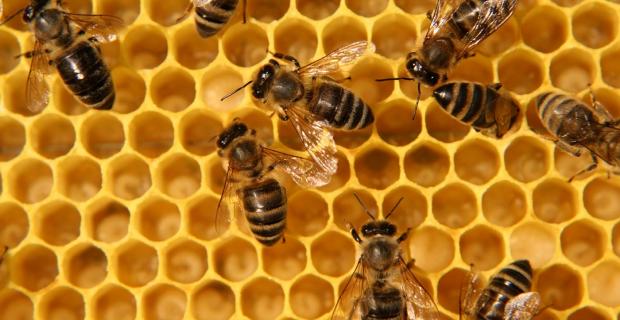Biosphere Education

The American classroom is fast becoming a laboratory for preparing young people for biosphere awareness.
In schools across the country, students are being instructed in the intricacies of ecosystem dynamics. They are being taught about the need to be more energy efficient and to recycle wastes as well as to nurture wildlife and safeguard biomes. Equally important, classroom pedagogy is beginning to emphasize the impacts that personal consumption habits have on the Earth's ecosystems. Children are learning, for example, that the wasteful use of energy in the family automobile or home results in the increase of emissions of carbon dioxide into the atmosphere. The heating up of the Earth's temperature that follows can lead to less rainfall and more drought in other parts of the world, adversely affecting food production and putting more of the world's poor at risk of malnutrition and even starvation. Children are becoming aware that everything they do — the very way they live — affects the lives of every other human being, our fellow creatures, and the biosphere we cohabit. They come to understand that we are as deeply connected with one another in the ecosystems that make up the biosphere as we are in the social networks of the blogosphere.
Now the newly emerging biosphere awareness is being accompanied by cutting-edge curriculum designed to help young people develop an even deeper sense of interconnectivity and social responsibility at the level of their personal psyches.
While the self-esteem movement swept into American classrooms and, to a lesser extent, classrooms in other developed countries in the 1980s and 1990s, with mixed results as mentioned earlier, the new pedagogical revolution is emphasizing empathic development. In April 2009, The New York Times ran a front-page article reporting on the empathy revolution occurring in American classrooms. Empathy workshops and curriculums now exist in eighteen states, and the early evaluations of these pioneer educational reform programs are encouraging. Schools report a marked reduction in aggression, violence, and other antisocial behavior, a decrease in disciplinary actions, greater cooperation among students, more pro-social behavior, more focused attention in the classrooms, a greater desire to learn, and improvement in critical thinking skills.1
The empathy curriculum helps students draw global emotional connections in the same way that the environmental curriculum helps youngsters draw global ecological connections. Michael McDermott, a middle school principal in Scarsdale, New York, put it this way: "As a school we've done a lot of work with human rights....But you can't have kids saving Darfur and isolating a peer in the lunchroom. It all has to go together."2
In many schools the empathy curriculum starts as early as first grade with five- and six-year-olds. One of the most interesting innovations is the Roots of Empathy Project, begun by a Canadian educator, Mary Gordon, which has been successfully introduced into classrooms across Canada and more recently in the United States. A mother and her baby visit the classroom once a month for an entire school year. (The baby is five months old at the beginning of the school year.) Before the visits, the students are prepped on what to expect, what to look for, and how to interact with the baby and mother. They will be asked to closely watch the interaction between mother and infant, especially how they communicate and respond to each other. They will observe temperament, mood, and intentionality with an eye to relating back to the group their impressions and feelings in the post-visit debriefing, with particular emphasis on their emotional reactions. The students are encouraged to dig into their own memories and life experiences as a way of understanding what the baby might be feeling or thinking or intending. For example, if the baby is experiencing frustration in attempting to sit up, the children will be asked how it must feel for him and relate it to their own feelings when frustrated in a new learning experience — like riding a bike.
As the monthly visits proceed, the students will take notice of the baby's emotional, mental, and psychological development, his evolving attachment to and relationship with his mother, his emerging curiosity and exploratory behavior and his improved coordination and communications skills. They will watch how the mother responds to her baby's distress, joy, and curiosity and the effect her responses have on him. Over the course of the year, the children come to experience the baby and his mother as unique individuals with needs and desires for affiliation and affection, not unlike their own. They become attuned to reading the baby's feelings and develop an empathic relationship with both the infant and the mother.
The learning experience often has a life-changing impact on the students' own emotional and cognitive development. Gordon tells the story of a young teenager who had been held back in eighth grade for two years. He was a deeply troubled youth who had watched his own mother murdered in front of him when he was four years old and had been subsequently shuffled into a succession of foster homes. He was a loner and was a menacing presence in the classroom.
One day during a mother-infant visit, the mother confided in the class that her baby was not much of a cuddler, much to her chagrin. Even when in his snuggly, the baby preferred to face outward rather than cuddle.
At the end of one session, much to everyone's surprise, the young teen, Darren, asked if he could try on the snuggly with the infant inside. What happened next shocked the teacher and mother and the entire class. Darren put the baby in the snuggly facing toward his chest. The baby snuggled in and cuddled while the youth took him to a quiet corner and rocked back and forth. When he returned to the mother and teacher with the infant a few minutes later, he asked, "If nobody has ever loved you, do you think you could still be a good father?"3 In a single moment, an unloved youth experienced the unconditional affection of a tiny infant, giving him the very first sense of being loved and giving one's love. He had experienced an empathic breakthrough that would change his own life. Gordon has chronicled thousands of such experiences. Although not always as dramatic, children come to learn about emotional literacy — which Gordon defines as "[t]he ability to find our humanity in one another."4
1 Hu, Winnie. "Gossip Girls and Boys Get Lessons in Empathy." New York Times. April 4, 2009.
2 Ibid.
3 Gordon, Mary. Roots of Empathy. Toronto: Thomas Allen Publishers. 2005. p. 6.
4 Ibid. p. 8.
"Biosphere Education," from The Empathic Civilization, by Jeremy Rifkin, copyright © 2009 by Jeremy Rifkin. Used by permission of Jeremy P. Tarcher, an imprint of Penguin Group (USA) Inc.



